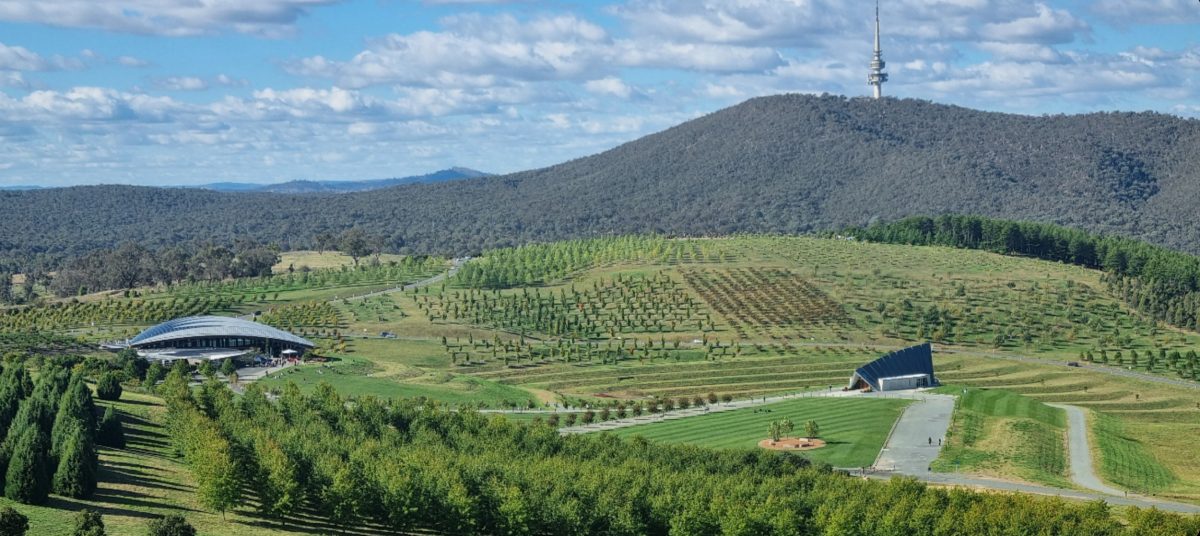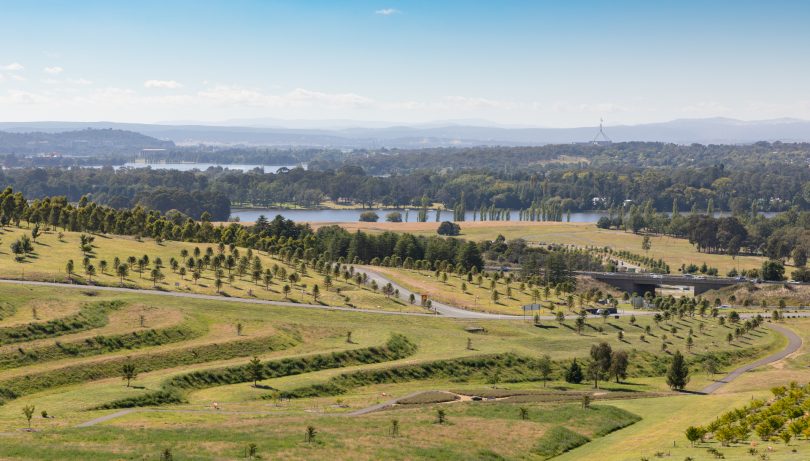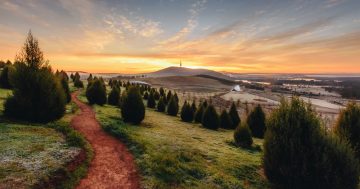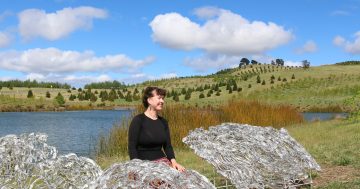
The National Arboretum, including the Visitor’s Centre, amphitheatre and the Margaret Whitlam Pavilion. Photo: Stephen Gray.
The National Arboretum celebrated its first decade with a Gala Dinner on site on Friday night. It has taken but a blink of the eye in a tree’s life for it to become a Canberra icon.
One that politically shouldn’t really have happened.
It took a lot of guts for former Chief Minister Jon Stanhope to decide to do it and then stick with the project in the face of water shortages, school closures, tight budgets and an Opposition that failed to see merit in the idea to their everlasting shame.
Can anyone seriously imagine the National Capital without it?
I was at the meeting where the design entries were unveiled and have to admit the 100 Forests idea would not have been my pick, preferring a more diverse and naturalistic approach than the patchwork quilt of monocultures.
But there is no doubt the design has been a winning one and becomes more so with every year of growth, particularly in these recent times when high rainfall has supercharged the forests.
The institution that rose literally from the ashes of the 2003 bushfires is also more than a collection of forests.
The decisions to include a visitor centre, grassed amphitheatre, playground, gardens, build trails, commission sculptures and create education programs have turned it into a multi-faceted attraction for local, out of town and overseas visitors.
The distinctive Village Visitor Centre, sitting on the top of the hill like a spaceship, is often the first destination on the list for visitors and is now a mecca for locals.

Taking shape: Construction on the National Arboretum. Photo: ACT Government.
The pandemic may have put more plans on hold, but eventually a permanent amphitheatre stage for concerts, a boutique hotel and glamping will add even further value to an amazing public asset.
The people of Canberra watch over the growth of the forests, walk and ride along their trails, get married there, stroll among the commemorative gardens, dine at its restaurant and their children roll down the grassy banks, fly kites and clamber over the eye-popping playground.
The Arboretum has become part of us as much as we are part of it.
Its development holds many lessons for current leaders who are often criticised for their lack of vision and political will and courage.
It took great vision and grit for Mr Stanhope and others like John Mackay, and let’s not forget Julia Gillard who tipped $20 million into it, to imagine what could be and then make that dream a reality.
It is also a tribute to the power of government to be a force for good and enlist the community and the private sector to a worthy cause.
In this bean-counting age of instant gratification, it seems hard for many to think of building something that may take decades to complete or even not be finished in one’s lifetime, certainly not without a perceived economic value.
But like trees themselves, the Arboretum will serve generations to come.

The priceless view from 72 metres above the city. Photo: Michelle Kroll.
To look out on the Arboretum’s forests and landscape, and then turn to the most incredible view of Lake Burley Griffin and the National Capital is to be gifted perspective.
I would urge all those who gather on Capital Hill to walk among its forests and reflect on what legacy they might want to leave.
Perhaps, just perhaps, they might bring that perspective to the Parliament, reconsider some of their priorities and rediscover the spirit of leaving the world a better place.
That does not mean abandoning all due diligence. In fact, the opposite is required to ensure that the seed of an idea can actually grow to fruition, as long as one doesn’t try to gauge the value of something that can’t be quantified.
In any case, if one wanted to dwell on the economics of the Arboretum, the numbers stack up pretty well for what it brings to ACT tourism after only a decade of operation.
But the Arboretum should remind us of what can be achieved when we set our minds to something, and the folly of petty gripes and cynicism.
It will stand long after we are gone as a testament to optimism, community and life itself.





















